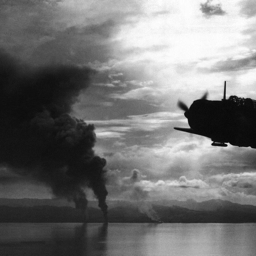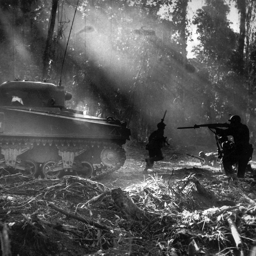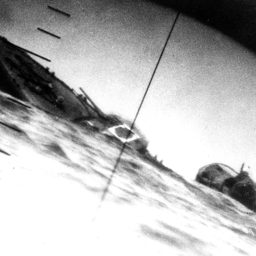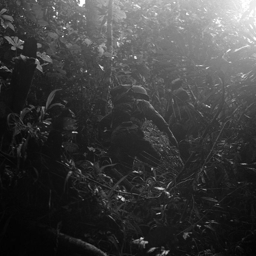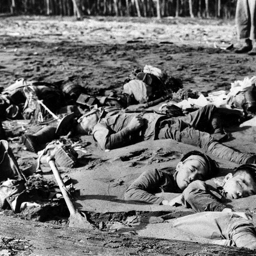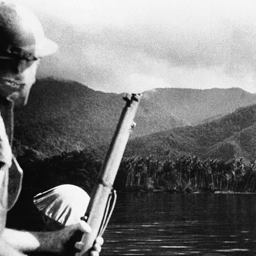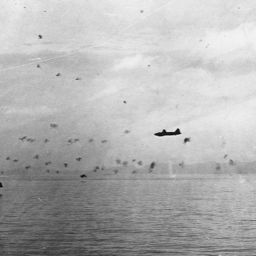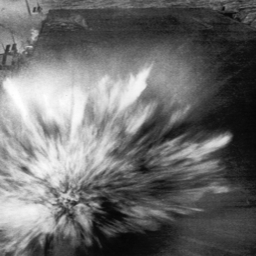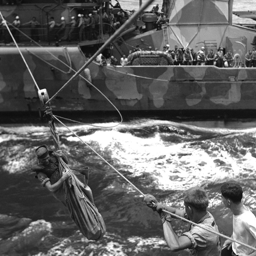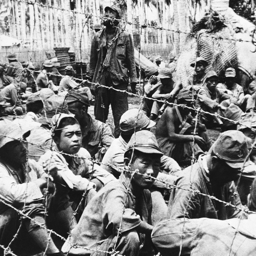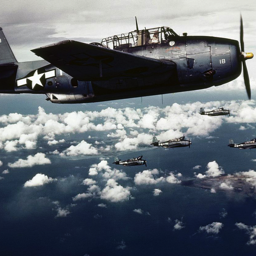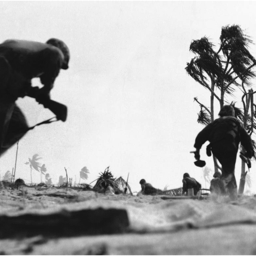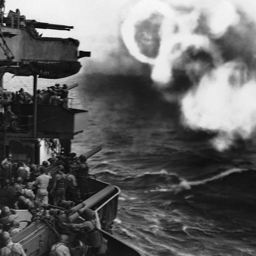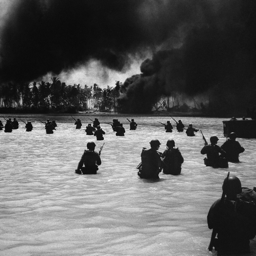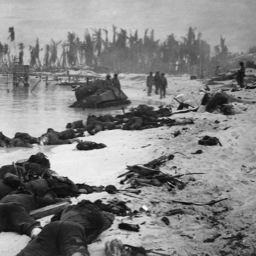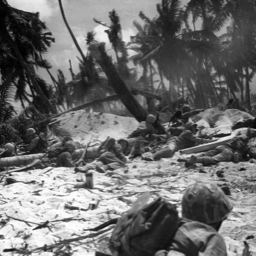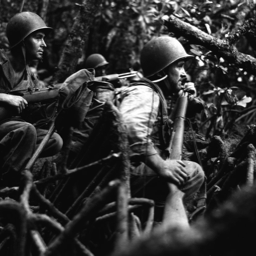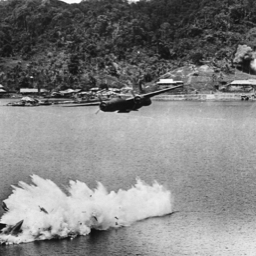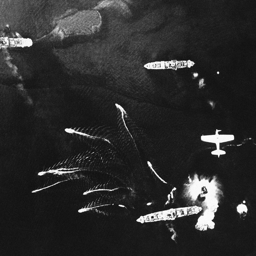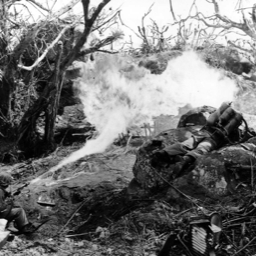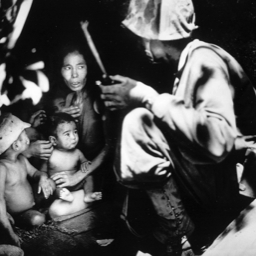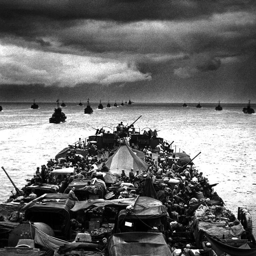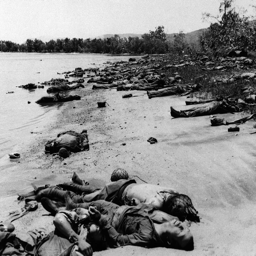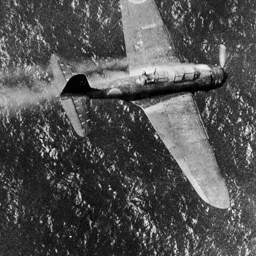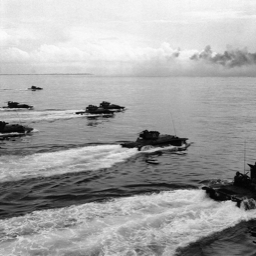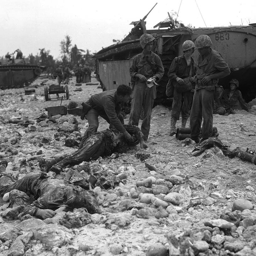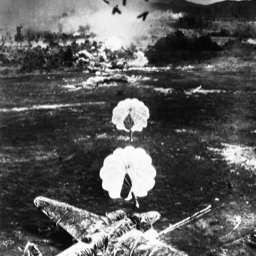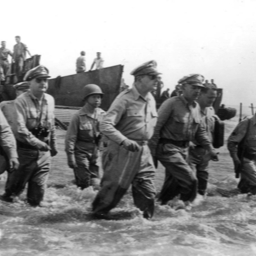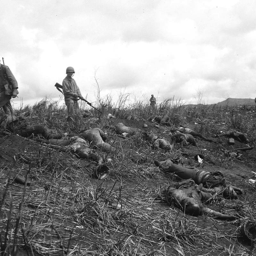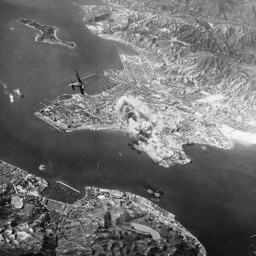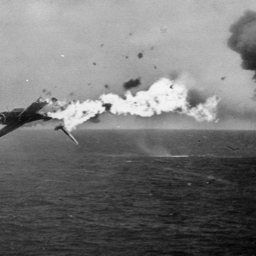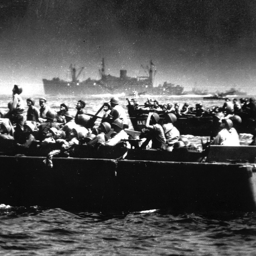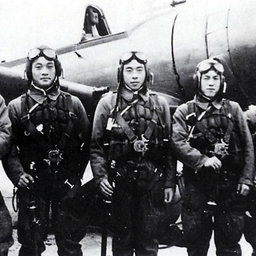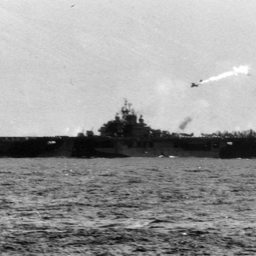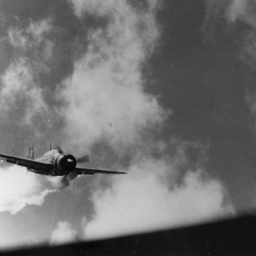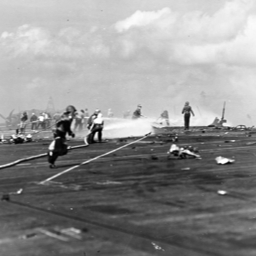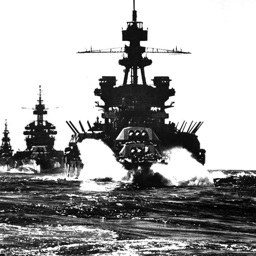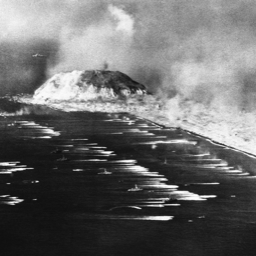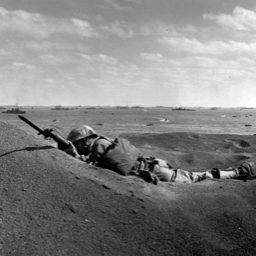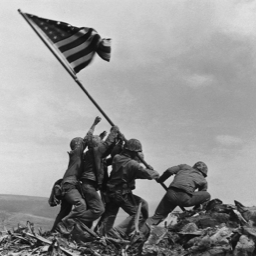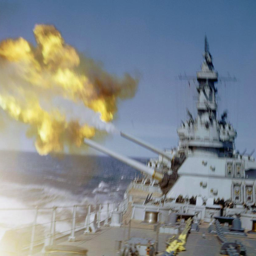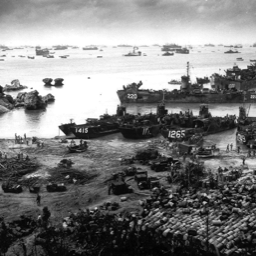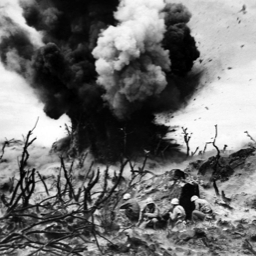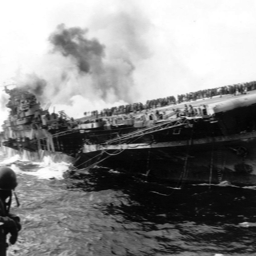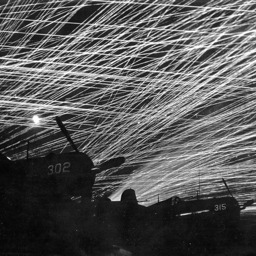



The Pacific War in Photos
By the end of 1942, the Japanese Empire had expanded to its farthest extent. Japanese soldiers were occupying or attacking positions from India to Alaska, as well as islands across the South Pacific. From the end of that year through early 1945, the U.S. Navy, under Admiral Chester Nimitz, adopted a strategy of "island-hopping". Rather than attacking Japan's Imperial Navy in force, the goal was to capture and control strategic islands along a path toward the Japanese home islands, bringing U.S. bombers within range and preparing for a possible invasion. Japanese soldiers fought the island landings fiercely, killing many Allied soldiers and sometimes making desperate, last-ditch suicidal attacks. At sea, Japanese submarine, bomber, and kamikaze attacks took a heavy toll on the U.S. fleet, but Japan was unable to halt the island-by-island advance. By early 1945, leapfrogging U.S. forces had advanced as far as Iwo Jima and Okinawa, within 340 miles of mainland Japan, at a great cost to both sides. On Okinawa alone, during 82 days of fighting, approximately 100,000 Japanese troops and 12,510 Americans were killed, and somewhere between 42,000 and 150,000 Okinawan civilians died as well. At this point, U.S. forces were nearing their position for the next stage of their offensive against the Empire of Japan.
Click on the images below to read an accompanying caption. Caution. Some images are graphic in nature.
Credit: TheAtlantic.com - World War II: The Pacific Islands (September 25, 2011).


